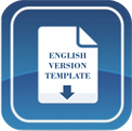Effectiveness of Conceptual Change Text in Reducing Acid-Base Misconceptions
DOI:
https://doi.org/10.15575/jtk.v6i1.9870Keywords:
acid-base, conceptual change text, misconceptionAbstract
Students had difficulty understanding the acid-base concept because of its complex nature. This difficulty could lead to an acid-base misconception. One of the learning tools that can be used to overcome misconceptions was Conceptual Change Text. This study aimed to determine the effectiveness of the Conceptual Change Text in reducing acid-base misconceptions. This study used one group pre-test post-test design with 18 Basic Chemistry II students at Billfath University. An acid-based diagnostic test determined students' misconceptions. The results showed there are nine and one misconceptions in pre-test and post-test, respectively. The application of the Conceptual Change Text was successful in reducing acid-base misconceptions with an effectiveness percentage of 97.76%.
References
Amry, U. W., Rahayu, S., & Yahmin. (2017). Analisis miskonsepsi asam basa pada pembelajaran konvensional dan Dual Situated Learning Model (DSLM). Jurnal Pendidikan: Teori, Penelitian, dan Pengembangan, 2(3), 385-391. Retrieved from http://journal.um.ac.id/index.php/jptpp/article/view/8636
Artdej, R., Ratanaroutai, T., Coll, R. K., & Thongpanchang, T. (2010). Thai Grade 11 students’ alternative conceptions for acid-base chemistry. Research in Science & Technological Education, 28(2), 167-183. http://dx.doi.org/10.1080/02635141003748382
Beerenwinkel, A., Parchmann, I., & Grasel, C. (2011). Conceptual change texts in chemistry teaching: A study on the particle model of matter. International Journal of Science and Mathematics Education, 9(1), 1235-1259. https://doi.org/10.1007/s10763-010-9257-9
Cepni, S., & Cil, E. (2010). Using a conceptual change text as a tool to teach the nature of science in an explicit reflective approach. Asia-Pacific Forum on Science Learning and Teaching, 11(1), 1-29. Retrieved from https://www.eduhk.hk/apfslt/v11_issue1/cepni/cepni7.htm
Cooper, M. M., Kouyoumdjian, H., & Underwood, S. M. (2016). Investigating students’ reasoning about acid−base reactions. Journal of Chemical Education, 93(1), 1703-1712. https://doi.org/10.1021/acs.jchemed.6b00417
Demircioglu, G. (2009). Comparison of the effects of conceptual change texts implemented after and before instruction on secondary school students’ understanding of acid-base concept. Asia-Pacific Forum on Science Learning and Teaching, 10(2), 1-29. Retrieved from https://www.eduhk.hk/apfslt/v10_issue2/gokhan/index.htm
Durmus, J., & Bayraktar, S. (2010). Effects of conceptual change texts and laboratory on fourth grade students’ understanding of matter and change concepts. Journal of Science Education and Technology, 19(1), 498-504. https://doi.org/10.1007/s10956-010-9216-9
Hake. (1998). Interactive-engagement versus traditional methods: A six-thousand-student survey of mechanics test data for introductory physics courses. American Journal Physic, 66(1), 64-74. https://doi.org/10.1119/1.18809
Landis, J. R., & Koch, G. G. (1977). The measurement of observer agreement for categorical data. Biometrics, 33(1), 159-174. https://doi.org/10.2307/2529310
Lathifa, U. (2018). Correcting students' misconception in acid and base concept using PDEODE instruction strategy. Unnes Science Education Journal, 7(2), 170-177. https://doi.org/10.15294/usej.v7i2.23202
Muchtar, Z., & Harizal. (2012). Analyzing of students’ misconceptions on acid-base chemistry at senior high schools in medan. Journal of Education and Practice, 3(15), 65-74. http://digilib.unimed.ac.id/id/eprint/398
Muntholib, Mayangsari, J., Pratiwi, Y. N., Muchson, Joharmawan, R., Yahmin, & Rahayu, S. (2018). Development of simple multiple-choice diagnostic test of acid-base concepts to identify students’ alternative conceptions. Proceeding of Advances in Social Science, Education and Humanities, 251-268. Malang: First International Conference on Science, Mathematics, and Education. https://dx.doi.org/10.2991/icomse-17.2018.45
Onder, I. (2017). The effect of conceptual change texts supplemented instruction on students’ achievement in electrochemistry. International Online Journal of Educational Sciences, 9(4), 969-975. Retrieved from https://iojes.net/index.jsp?mod=makale_ing_ozet&makale_id=40666
Pinarbasi. T., Canpolat, N., Bayrakceken, S., & Geban, O. (2006). An investigation of effectiveness of conceptual change text-oriented instruction on students’ understanding of solution concepts. Research in Science Education, 36(1), 313-335. https://doi.org/10.1007/s11165-005-9003-4
Rohmah, R. S. (2017). Pengaruh teks perubahan konsep terhadap perbaikan kesalahan konsep materi dan perubahannya [Unpublished master’s thesis]. Universitas Negeri Malang. Retrieved from http://repository.um.ac.id/id/eprint/60168
Rohmah, R. S., Fariati, & Ibnu, S. (2020). Effect of conceptual change texts on physical inorganic chemistry students’ misconceptions of matter and its changes. AIP Conference Proceedings, 2215, 020020. https://doi.org/10.1063/5.0000492
Sadhu, S., Timaz, M. T., Cahyani, V. P., Laka, A. P., Annisa, D., & Fahriyah, A. R. (2017). Analysis of acid-base misconceptions using modified certainty of response index (CRI) and diagnostic interview for different student levels cognitive. International Journal of Science and Applied Science: Conference Series, 1(2), 91-100. https://doi.org/10.20961/ijsascs.v1i2.5126
Sari, I., Sinaga, P., Hernani, & Solfarina. (2020). Chemistry learning via distance learning during the Covid-19 pandemic. Tadris: Jurnal Keguruan dan Ilmu Tarbiyah, 5(1), 155-165. https://doi.org/10.24042/tadris.v5i1.6346
Sesen, B. A., & Tarhan, L. (2011). Active-learning versus teacher-centered instruction for learning acid and base. Research in Science & Technological Education, 29(2), 295-226. https://doi.org/10.1080/02635143.2011.581630
Sevim, S., & Tarim, S. S. (2017). Comparison of the conceptual change of analogies and conceptual change texts in eliminating students’ alternative conceptions for acids and bases. Turkish Journal of Teacher Education, 6(1), 47-60. Retrieved from http://tujted.com/makale/637
Turgut, U., & Gurbuz, F. (2012). Effect of conceptual change text approach on removal of students’ misconceptions about heat and temperature. International Journal Innovation and Learning, 11(4), 386-403. http://dx.doi.org/10.1504/IJIL.2012.047139
Ultay, N & Calik, M. (2016). A comparison of different teaching designs of ‘acids and bases’ subject. Eurasia Journal of Mathematics, Science & Technology Education, 12(1), 57-86. https://doi.org/10.12973/eurasia.2016.1422a
Ultay, N., Durukan, U. G., & Ultay, E. (2015). Evaluation of the effectiveness of conceptual change texts in the REACT strategy. Chemistry Education Research and Practice, 16, 22-38. https://doi.org/10.1039/C4RP00182F
Utami, D. B., Rahmawati, Y., & Slamet, R. (2017). Penggunaan conceptual change text dengan model pembelajaran 5E untuk mengatasi miskonsepsi siswa pada materi asam basa di SMAN 4 Tambun Selatan. Jurnal Riset Pendidikan Kimia, 7(1), 30-37. https://doi.org/10.21009/JRPK.071.10
Yuruk, N. (2007). The effect of supplementing instruction with conceptual change texts on students’ conception of electrochemical cells. Journal of Science Education and Technology, 16(6), 515-523. http://dx.doi.org/10.1007/s10956-007-9076-0
Yuruk, N., & Eroglu, P. (2016). The effect of conceptual change texts enriched with metaconceptual processes on pre-service science teachers’ conceptual understanding of heat and temperature. Journal of Baltic Science Education, 15(6), 693-705. Retrieved from http://oaji.net/articles/2016/987-1482502823.pdf
Downloads
Published
How to Cite
Issue
Section
Citation Check
License
Authors who publish with this journal agree to the following terms:
- Authors retain copyright and grant the journal right of first publication with the work simultaneously licensed under a Creative Commons Attribution-ShareAlike that allows others to share the work with an acknowledgement of the work's authorship and initial publication in this journal.
- Authors are able to enter into separate, additional contractual arrangements for the non-exclusive distribution of the journal's published version of the work (e.g., post it to an institutional repository or publish it in a book), with an acknowledgement of its initial publication in this journal.
- Authors are permitted and encouraged to post their work online (e.g., in institutional repositories or on their website) prior to and during the submission process, as it can lead to productive exchanges, as well as earlier and greater citation of published work (See The Effect of Open Access).








